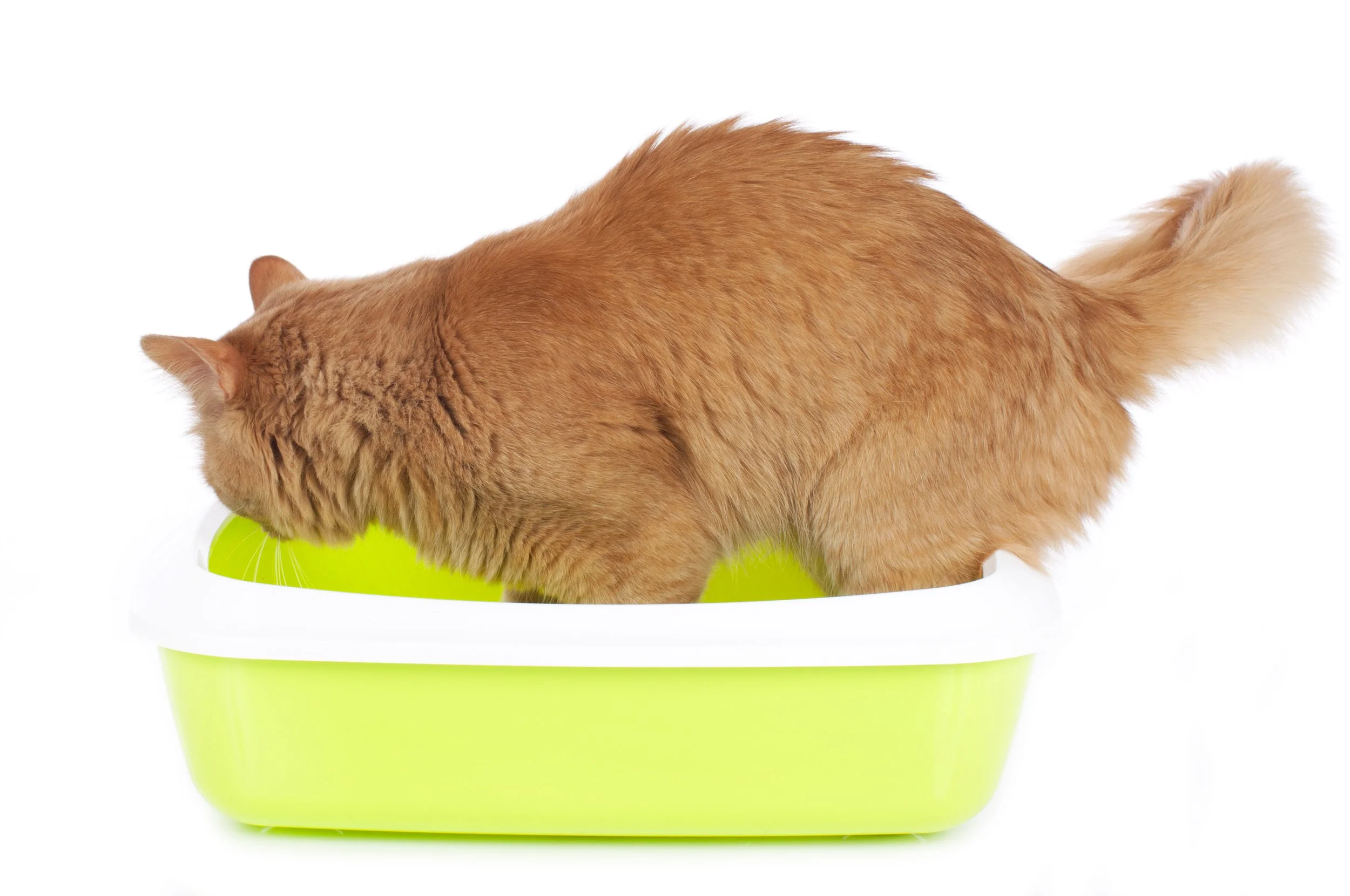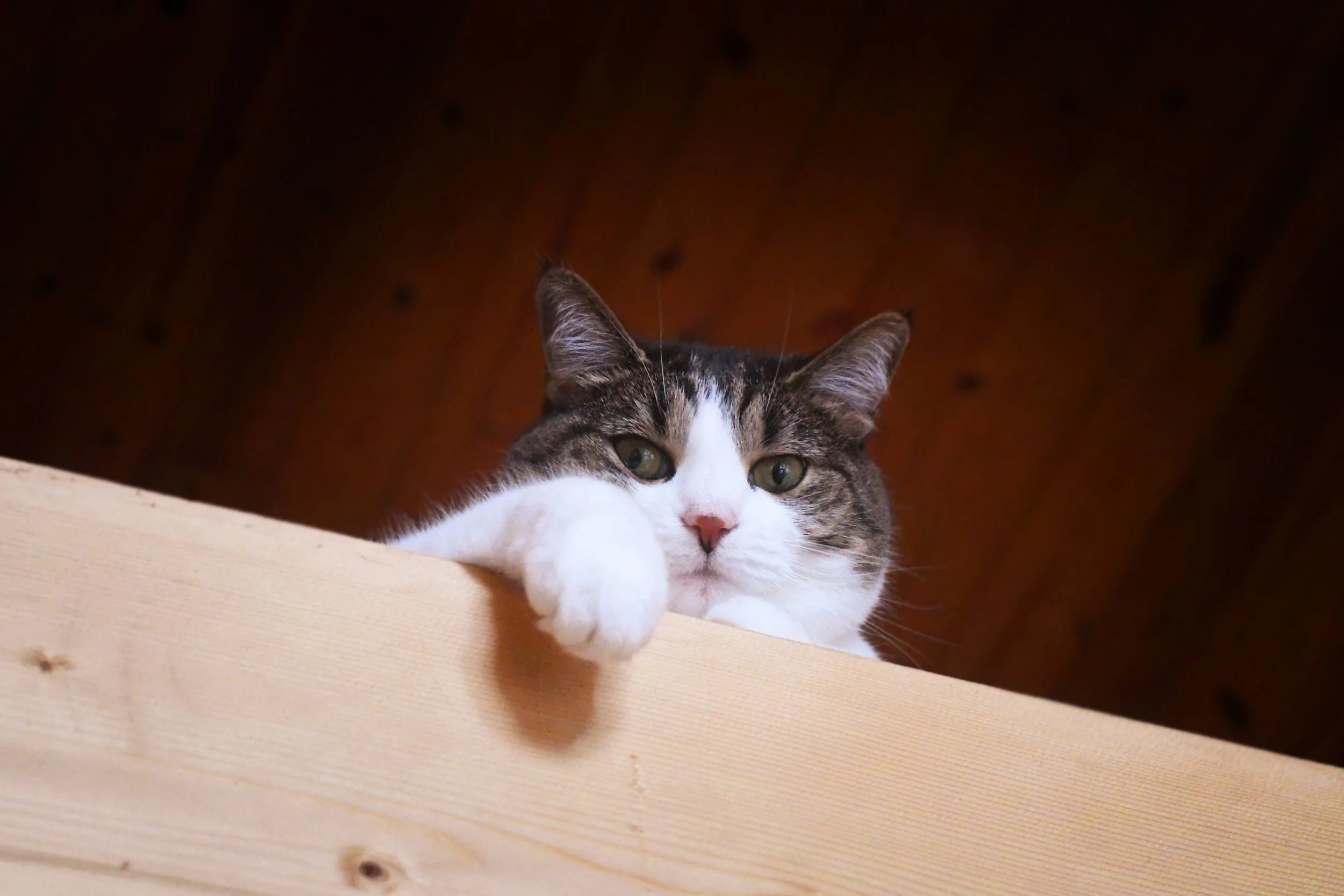TOP TIPS for Feline Clients
Did you know that Insight Animal Behavior Services treats cats? While our feline friends make up a smaller percentage of our patient base, we are just as well-versed in helping cats as we are dogs.
Similar to our TOP TIPS for Canine Clients, our goal for this blog post is to share our most common recommendations so that new clients, potential clients and anyone interested in helping their cat can get started ASAP!
Top Tip #1- Learn to Listen
What is your cat trying to tell you? Our cats express so many emotions through their body language. Their signals can be subtle and easily missed, however, especially those that express mild to moderate discomfort or frustration. Humans are not born with an innate understanding of cat language so it is a skill that we have to learn. Thankfully there are many great resources that do a fantastic job of teaching us cat language. AND by having a better understanding of cat body language and behavior, we can learn how to better meet our cat’s needs.
Here are some of our top resources for learning to listen to your cat:
Top Tip #2- Change the Environment First
Evaluating your home environment to make sure it’s meeting your cat’s needs is the first and most important step in both addressing and preventing behavioral issues.
Litter Boxes
I have some earth shattering news- the suggested litter box size is 1.5 times the length of the cat (nose to tail). And that is from their nose to the tip of their tail, not the base! A quick walk down the aisles of your local pet supply store will help you realize that most commercial litter boxes are too small for almost any adult cat. Squeezing into a small box several times a day every day can get really frustrating or downright uncomfortable for some cats, and they may eventually find that a larger area (such as a rug) is a much preferable potty. And even if your cat is tolerating and consistently using a small litter box, their less than ideal litter box situation can cause chronic stress.
This litterbox is way too small for this cat—a large plastic storage container is a better option
The easiest (and most affordable!) litter box solution is to purchase an under the bed storage container. These are typically quite large and can accommodate most cats. The sides are typically only a few inches tall for easy entry from any side. If your cat tends to kick litter out of the box, a storage container with taller sides is a great option as long as you cut an entryway into one of the sides.
There should be one litter box per cat plus one extra, ideally with one per level of the home that the cats have access to.
Boxes should be scooped once to twice daily (more frequently if you have multiple cats in the home).
The box should be completely emptied, washed with mild unscented soap and water, and filled with fresh litter every 2-4 weeks (more frequently if your cat tends to urinate or defecate outside of the box).
While there are MANY types of litter out there, when given the choice most cats prefer clumping clay litter.
Vertical Variety
Seeking height is a natural behavior in cats
Climbing and spending time off the floor are natural behaviors for felines—this helps them to cope with stress and observe what’s happening in the home from a safe vantage. Provide plenty of perching options for your cat in the rooms they spend most of their time—options include window perches, cat trees, and wall mounted shelves to name a few.
If your cat is spending time on surfaces you do not want them on, such as your countertops, offering more desirable perches can help direct this very normal behavior to a more acceptable location.
Top Tip #3- Avoid Corrections
Corrections include but are not limited to:
Yelling
Hitting
Spraying with water
Shaking a noisemaker
While corrections may briefly interrupt an unwanted behavior, they do not give your cat the opportunity to learn a more desirable behavior and can have a negative impact on your relationship with your cat. Think about a cat scratching your sofa. If you yell, the cat may run away, but most likely will resume the scratching again later.
It is much easier to replace an unwanted behavior with a more desirable behavior, but what does that look like? Let’s go back to the cat scratching the sofa example. Instead of yelling, you can try redirecting the cat to do something else. Introducing a toy or treat can pique your cat’s curiosity. You can also purchase different scratching surfaces and use the toy or treat to lead the cat to that surface where you would prefer them to scratch.
Better yet, if you can predict that your cat will engage in an unwanted behavior, such as scratching the sofa when they wake up from a nap, you can place scratchers next to their favorite nap spot to set them up for success.
Read the American College of Veterinary Behaviorists Position Statements to learn more about positive reinforcement and the harm that corrections can cause.
Top Tip #4- Increase Enrichment
Enrichment is an umbrella term that encompasses anything that you are adding or changing in your cat’s environment to provide mental and physical stimulation and that allows them to engage in behaviors natural to their species. By proactively enriching their environment, you are helping improve their quality of life
Toys
Rotate toys every few days to keep the stash novel and interesting.
Add catnip or silvervine in or on a toy to increase its novelty.
Examples of interactive toys for cats: Whisker City Modular Track with Ball, Instincts SmartyKat Wild Wand Cat Toy, KONG Sway N' Play Cat Toy, and Catit Play Spinning Bee Interactive Cat Toy
Feeding
Using food puzzles stimulates cats’ natural instincts to forage for food
Hide treats around your home to promote your cat’s natural urge to search for food/ hunt. This encourages exploration, interaction with and manipulation of the environment, and problem-solving.
Food offered in the same bowl in the same location every day is a missed opportunity for enrichment! Incorporating different ways for your cat to eat is an easy way to reduce the monotony of meal time. You can purchase items such as a LickiMat or a Kitty Kong, but you can also make your own foraging toys or treat dispensers.
For a DIY approach, cut holes in a paper towel roll or a plastic water bottle and fill it with dry kibble or treats and let your cat bat it around to get their food.
For more inspiration and information on transitioning your cat from eating out of a bowl to eating our of foraging toys check out foodpuzzlesforcats.com
Play
Chasing and pouncing part of normal cat play and can be given appropriate outlets with wands and teaser toys
Having short (>5 minutes) play sessions with your can can help you learn more about what they do and do not like.
Utilize wands to stimulate chase and pouncing. While there are many options available, our favorite toy to encourage this type of play is the Cat Dancer.
Offering treats during playtime around new items can also increase your cat’s interest and confidence in exploring the new item (ex. cat tree, cat bed, etc.).
We hope you enjoy learning more about your cat and how to help them thrive under your care!
Interested in becoming an Insight Client? Click here to learn about our process.






